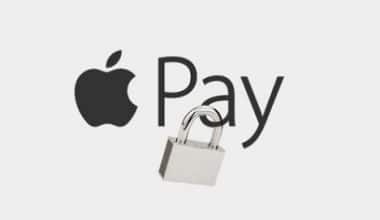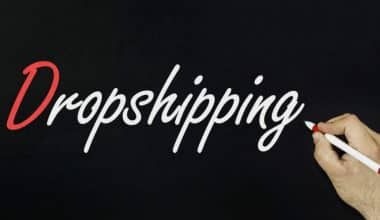You want to sell a product on Amazon, the internet’s most frequented eCommerce website, with over 300 million active customers. It’s not as difficult as you may imagine deciding what to sell on Amazon and how to sell it. In reality, the majority of your research may be done for free on the site itself. We’ve put together this guide to help you pick a low-risk, high-return product to sell on Amazon. Continue reading to find top-selling things, what you should sell, and how to conduct research to ensure anything you’re selling is a safe bet on Amazon.
Common Features of Best-Selling Items on Amazon
Best-selling things appear and disappear (seemingly hourly) from Amazon’s bestseller list, yet there are reasons why they rise to the top. Let’s see what these products have in common to see what we can learn:
- All of these things are reasonably priced: Virtually everything costs less than $100. Investing in low-cost things also helps you reduce risk. Imagine buying 100 Beats by Dre for $15K or more. Nevertheless, loading up on 100 packs of baby wipes may only cost you $1,500. Now, the profit margins on these things vary greatly, as does the level of risk.
- Recurrent Purchase: Several of these things are likely to be repeated purchases. Consumers will require many packs of baby wipes, an annual renewal of antivirus software, the latest Echo device, and gift cards.
- Evergreen: Certain products are more evergreen than others. Parents will always require baby wipes, and households will require safety products. Nevertheless, if you revisit this list in December, you may see that holiday decor and toys are among the top-performing categories.
- Good Reviews: All of the products on this list have received four-star or better ratings.
- High Review Volume: These goods all have thousands of reviews, indicating that they have had thousands of purchases and (given the feedback of) thousands of positive experiences.
Best Selling Items on Amazon
Let’s look at some of the best-selling things on Amazon to get some inspiration first.
Amazon curates a list of current best-sellers that includes toys, books, and video games, and updates the list hourly. The following are some of the most popular product categories:
#1. Home and Kitchen
Given the variety of Home & Kitchen products – appliances, furniture, décor, and more — it’s no surprise that 32% of Amazon sellers choose to sell in this category. Furthermore, it is a thriving market, with global retail sales of home and household appliances totaling $448 billion USD in 2021.
It’s crucial to remember that because Home & Kitchen is so popular, it may be more difficult for new sellers to find success in this area. Hence, if you’re thinking of entering this market, make sure you have a high-quality product that satisfies a specialized niche.
#2. Clothes, Shoes, and Jewelry
It should come as no surprise that one of Amazon’s most popular product categories is Clothes, Shoes, and Jewelry. After all, the e-commerce site accounts for over 35% of all garments sold online, making it one of the best-selling online fashion merchants. Amazon consumers, in particular, prefer casual clothing to luxury fashion, with Hanes and Amazon Essentials as their top brands.
It’s vital to note that this sector might get oversaturated, so make sure you have something distinctive to offer. Consumers don’t hunt for pricey brand things on Amazon; instead, they look for bargains. Hence, whether you’re thinking to sell clothes, shoes, or jewelry, make sure your goods are of high quality and reasonably priced.
#3. Electronics
From computers and televisions to surveillance systems and wearable technology, people are always looking for the latest in technology, especially when purchasing online. In fact, over half of all computer and electronics sales take place online.
Customers frequently purchase from Amazon because the company continuously shows competitive prices on some of the world’s most popular electronics. If you have the ability to acquire electronics in volume, this could be a potential category to pursue as a third-party vendor.
#4. Beauty & Personal Care
Despite a 15% drop in global revenues in 2020, the Beauty & Personal Care business should not be underestimated. The market recovered with a nearly $3 billion sales boost in 2021 and is predicted to continue to expand.
The Beauty & Personal Care area contains everything from makeup and skincare to fragrances and hair products. Even though there is a lot of competition in this sector, with 23% of third-party sellers offering things, individuals that specialize in developing handcrafted cosmetics may definitely flourish in this category.
Of course, the more popular the product category, the more intense the competition. It’s critical that you discover your specialty to avoid competing with the 300,000 other search results for “white t-shirt.”
Let’s talk about how much it costs before we get to what to sell on Amazon.
What Does It Cost To Sell on Amazon?
Professional and Individual are the two selling programs that Amazon offers. The Professional sell plan is $39.99 per month, with per-item sell fees that vary by category. Alternatively, the Individual sell plan allows you to pay $0.99 per item sold plus other sell costs that vary by category. Because there is no monthly subscription price for the Individual selling plan, it is likely the better option if you expect to sell fewer than 40 products.
You should examine delivery charges and Amazon seller fees to determine how much you’ll need to spend. This information might help you narrow down your options; for example, a two-to-three-pound item will be lightweight and easy to transport, lowering your shipping costs.
Together with weight, you’ll want to consider things that aren’t readily broken when carrying them.
Also, most products on Amazon range from $10 to $50, so choose ones you can sell for a profit.
What To Sell on Amazon
Sure, you may sell things on Amazon, but to actually flourish on the site, you must be able to offer distinctive, low-cost products with little competition.
It’s not smart to sell on Amazon only to sell on Amazon because of the platform’s oversaturation, which makes it more difficult than ever to stand out. Instead, you want to make sure you can actually provide something of value.
If you have a product in mind, use the recommendations above to fine-tune your strategy and discover a niche group within a bigger market. Start with the basics if you don’t have a product in mind: what are the most-searched phrases on Amazon, and which products are the most successful?
Consider related items that the consumer would find more engaging or useful than the ones currently featured on Amazon after you have a list based on keyword research.
8 Tips To Help You Find What To Sell on Amazon
It doesn’t imply you should sell something just because it’s a best seller on Amazon. Levi’s shorts are unlikely to be as popular in the coming winter, and competing with Amazon to sell the Echo would be challenging.
You must locate on-brand merchandise. It also helps if you like, care for, and use the products you sell. If you’re a 40-year-old balding man (which is just fine), shampoo products might not be for you.
Remember, you don’t have to enjoy or use the items you sell, but it helps.
With over 150 million Amazon Prime users (think about that for a second), you’re bound to find a sizable audience for just about any niche—whether it’s Star Wars LEGO kits or CrossFit foam rollers.
Having said that, finding things to sell on Amazon isn’t as simple as Googling “Top Selling Items On Amazon” and clicking the first link you see.
Let us assist you in focusing your search. Use these techniques to identify the correct on-brand, in-demand, and not overly competitive products on Amazon:
#1. Avoid Competing With Amazon.
Millions of Amazon items are sold. If the monolith is trying to sell something, just ignore it.
They’ll be able to outbid you, and they’ll almost always have the Purchase Box. Spare yourself the pain and look for an alternative product.
Concentrate on more niche items rather than generic products. You’ll have greater luck controlling a market for ultrarunners than going after the average runner. And you’ll probably encounter less competition if you sell things to vegetarian swimmers than to vegetarians in general.
#2. Do Keyword Research to Determine the Demand
While looking for the appropriate goods to sell on Amazon, you’re seeking for the Goldilocks balance of demand and competition. You want to sell things that are in high demand and have little competition, but you’ll need to perform a lot of research to uncover those golden prospects.
You’ll need to look at certain keywords to determine demand. These are some popular tools you can use:
1. Amazon Search Bar for Amazon
Type a product into Amazon to see what pops up. Amazon fills up the text based on search volume. If other people frequently look for the same product, it will appear higher on the list. These are the products you wish to target.
For example, “dog toys for large dogs aggressive chewers” is a pretty particular product. It’s not simply a dog toy—nor is it just a dog toy for huge dogs. It’s a dog toy for large dogs who are aggressive chewers.
After finding a product that is in high demand, you should explore Amazon to see what other vendors are listing. If you come across a popular search word that doesn’t have any products catering to it, you’ve most certainly stumbled across a gold mine.
2. Google Keyword Planner
Another tool you may use to evaluate interest is Google’s free Keyword Planner. Find out what others are looking for online by using Keyword Planner.
We might double-check the dog toys keywords to see if there is a large search volume.
That does, according to the findings. Yet, you’ll also see it has “High” competition. Be prepared to fight for it if you intend to pursue this product on Amazon.
#3. Avoid Brand-Heavy Categories
You should be concerned about more than just Amazon. Large players dominate many consumer items, and they usually have the reputation, marketing, manufacturing, and budget to beat you.
Avoid them.
Running shoes? Nike and Adidas have that covered. Toothpaste? Crest and Colgate are in charge. Mobile devices? Please, iPhones and Androids are already available.
Remember to narrow your focus. Choose a niche product where the larger players won’t run all over you, such as glow-in-the-dark flavorless toothpaste, if you want to sell toothpaste. Sounds excellent. All that remains is to ensure that there is sufficient demand.
#4. Compile the Data. All the Numbers
Your product must be profitable. It makes no difference whether you beat the competition and make all the sales if you aren’t making enough to cover your expenses.
Analyze the data to see if it works. Consider your manufacturing costs, storage fees, packaging charges, and delivery prices. Add everything up.
You might not be able to make the math work even if you locate a gold mine on Amazon. It occurs. Try using Amazon FBA to reduce overhead—it could be the missing piece.
Don’t criticize yourself. Go to the next product concept.
#5. Consider User Testimonials on Amazon
Amazon relies heavily on customer reviews. Even the most inexpensive items will fail if they do not constantly receive positive feedback.
Before you buy something, read the reviews. Consumers that enjoy your items are more inclined to make repeat purchases and return them, which is exactly what you want.
You should also consider the number of reviews. You should look for products with hundreds of reviews—that way, you’ll know it’s a safe bet.
Yet, some other outstanding solutions may not have as many reviews. They may only have 50 or so reviews. Examine the input to determine whether it is phony or genuine. If they’re true, the product still has a lot of potentials.
#6. Evaluate the Product’s Dimensions and Weight
Big, hefty objects will be more expensive to store and send. When investigating items, keep this in mind.
Consider offering sports shorts, which are lightweight and can be compressed to the size of a tennis ball. They’re inexpensive and simple to send, which is exactly what you’re looking for.
Now consider how to sell picture frames. They are available in a wide range of shapes, sizes, and weights. They also require protection to avoid damage during storage or travel. They are slightly more expensive due to these considerations.
Looking back at our list of best-selling items, we notice that the majority of them are lightweight and long-lasting. You won’t have to bother about shipping or keeping Crocs or batteries.
#7. Choose Items That Sell Good Together
Take a step back and consider the bigger picture when deciding what to sell on Amazon.com. What will be your second or third product if you are successful on the platform? How about your tenth?
Don’t confine your brand to selling things that are difficult to scale. If you start selling baby wipes, you may expand into diapers, lotions, toys, and baby bags. But, your options will be more limited if you start to sell glow-in-the-dark toothpaste.
#8. Compare One-Time Purchases to Recurring Purchases
Clients just require one squatty potty (typically), but they require monthly refills of shaving razors or dish sponges. Your target audience may only require one pair of Crocs, but they will most likely require a new set of batteries every year or so.
Consider this while selecting your items: do you intend to sell single products to a large number of clients, or do you prefer to sell a large number of products to recurrent customers?
Which Amazon Selling Course is the Best?
There are several different courses available for Amazon sellers at various levels. Kevin King’s Freedom Ticket is probably the greatest course for new Amazon sellers. Astonishing Selling Machine and Proven Amazon Course are included as honorable mentions.
How Can You Know if There Is a Market for Your Product?
You may find out if your product will sell in a variety of methods. To begin, choosing a popular product category will enhance the likelihood that your product will sell. Second, conduct market research by looking at other people’s products and determining what buyers complain about, as this is an opportunity to create a superior product. There is also tremendous potential if you go on Alibaba or Etsy and locate a product that is selling well there but isn’t currently available on Amazon.
Is Amazon Allowing Reselling?
Amazon does permit reselling. Products can be purchased from other merchants or websites and resold on Amazon. The Amazon Seller App features a feature that allows you to scan things to see how much they are selling for on Amazon, therefore you should use it.
Conclusion
There is no fool-proof strategy for consistently selling on Amazon, as the top-selling products change frequently. Yet, the criteria for determining what to sell on the marketplace remain the same.
It is more crucial than ever to provide valuable items. Hence, to actually succeed on Amazon, offer distinctive, low-cost products with little competition.
- AMAZON LOANS: Financing Options for Sellers on Amazon
- How To Be An Amazon Seller: Best 2023 US Practices & All You Need
- AMAZON AFFILIATE REQUIREMENTS: Best Practices & All You Need
- HOW TO START AN AMAZON BUSINESS IN 2023: Step-By-Step Guide
- How To Become An Amazon Affiliate: Step-by-Step Guide






